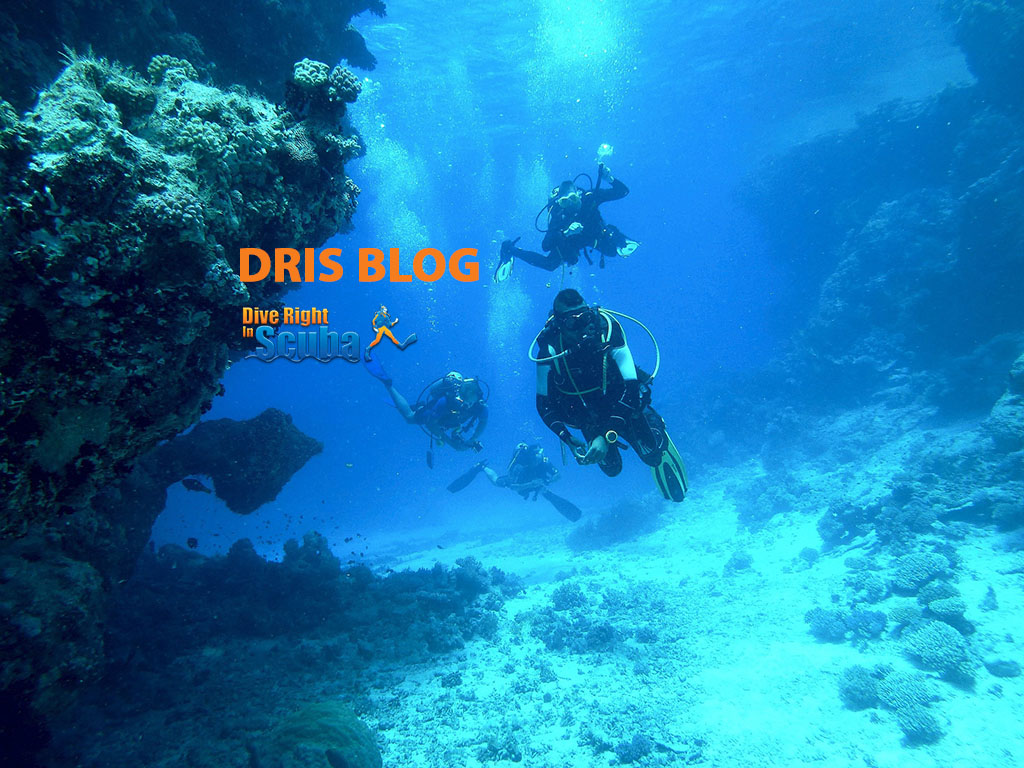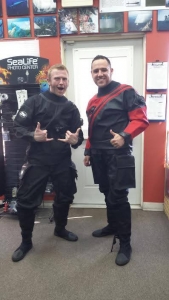Purchasing a drysuit is perhaps the most significant investment you will make during your diving career. You need a drysuit if you plan to start diving often, and it’s important that you choose the best one to suit your dives (see what we did there).
The team here at Dive Right In Scuba recognizes this and has taken great pride over the years in our efforts to help you make the right choice for your personal diving enjoyment. In the spirit of our efforts to make the purchase of a drysuit a painless experience, we have picked out some of the most common questions we get. Of course, if you have other questions for our dive shop experts…we’re available to help!

Which Type Of Drysuit Seal Is The Best For My Diving?

Many divers who venture into frigid waters prefer neoprene seals because of their inherent insulating properties. On the downside they tend to be a bit tougher to pull over the diver’s head, and, neoprene seals tend to stretch out over time. Latex seals are often the “stock” solution on drysuits. They have the advantage of maintaining their shape and size over a long period of time.
In addition, they most often come in a one size fits all solution and can be trimmed to fit. The downside of latex seals is they tend to degrade when exposed to ozone, UV deterioration, and latex allergies. Silicone seals are the newest technology when it comes to drysuit seals. They are soft, pliable, and more comfortable. On the downside, they are susceptible to puncturing and tearing. In addition, they tend to stretch out over time. Silicone seals are most often used on replaceable systems.
Should My Dry Suit Have Attached Boots Or Neoprene Socks?
The debate over attached boots or neoprene socks and lace up boots seems to be one that transcends the ages. Many divers like myself personally prefer attached boots, mainly because I like having my suit as a stand alone unit(and I would most likely forget the lace up boots), there are downfalls to them.
As an example, attached boots tend to capture an air bubble that could invert the diver if not managed correctly(see article on whether to take a drysuit course or not). While neoprene socks require a separate boot and something else to pack, they do keep that dreaded air bubble from getting to your feet. In addition, you can swap out and replace the boots pretty easily.
How Should A Drysuit Fit Me?
This is a rather simple question to answer, your drysuit should fit well. Yeah, I know that’s vague so allow me to explain. Your suit should fit to allow for mobility and generally unrestricted movement. On the flip side of the coin, it should not fit like a baggy hefty bag…this will create drag and the potential for an unmanageable air bubble when diving the suit. When considering what size to get, remember that the team at DRIS is exceptionally experienced at sizing up divers for a proper drysuit fit. So…just ask, we’re here to help.
There you have it, the top 3 questions we get about purchasing a drysuit! Of course if you have more questions, just pick up the phone, log on and chat with us, or drop an email. Here at Dive Right In Scuba we love to talk diving and equipment!
